As we all look forward to Easter we have another guest blog is from Amanda Winstead. Amanda is a writer from the Portland area with a background in communications and a passion for telling stories. If you want to follow her writing journey, or even just say hi you can find her on Twitter.
Wildflower gardens have risen in popularity in the past 5 years. This is largely thanks to support from the RHS and an improved understanding of how our gardens can support ecosystems and wildlife.
However, wildflower gardens are more than a trend. Wildflower gardens have distinct, long-term benefits and are a far more eco-friendly, sustainable alternative to traditional grass lawns.
Wildflower lawns also look great. Uncultivated splashes of colour help your front garden stand out from a sea of green, and the joy of watching pollinators go about their business is unparalleled.
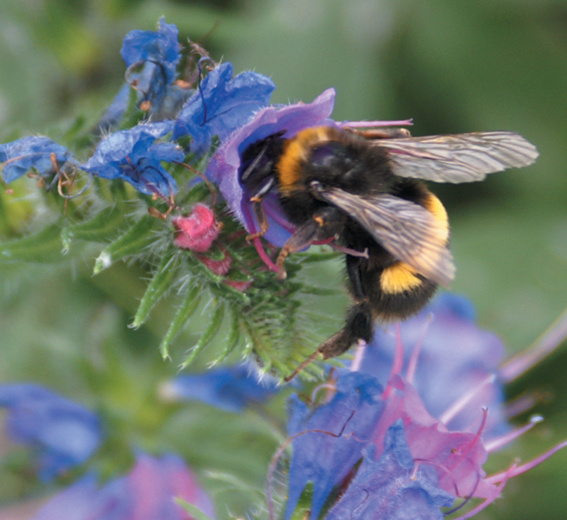
Sustainability Benefits
Wildflower lawns look great and are good for the environment. By planting a wildflower meadow, you are contributing to a patchwork quilt of biodiversity and are reducing your carbon footprint. That’s because 97% of Britain’s wildflower meadows have been destroyed since WWII. So, your small change can make a big difference to the local ecosystem.
Wildflower meadows are less energy and water intensive, too. Trimming and watering a traditional lawn requires a vast amount of water and electricity. Instead, you can cultivate a carbon-neutral wildflower meadow in the same space.
Low-carbon meadows are not intensive, and simply make use of existing flora and fauna. Buttercups, clovers and dandelions will quickly spring up and be joined by a cacophony of seeds that have either been selected by you or have simply arrived on the wind.
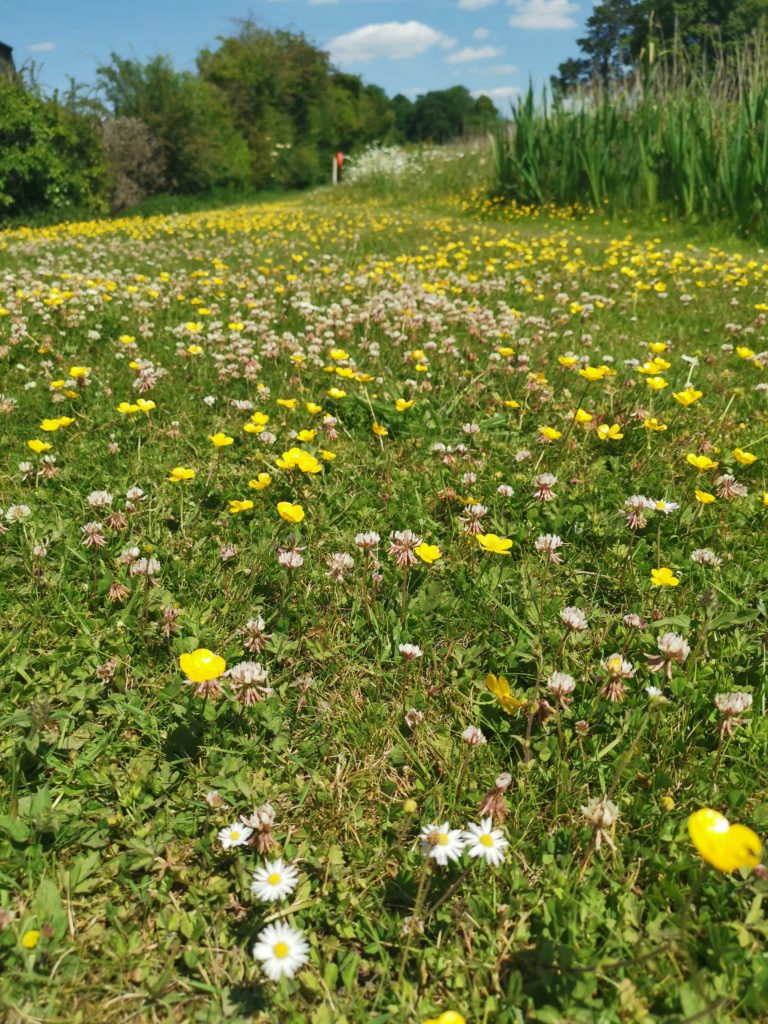
Bees and Pollinators
Everyone knows that pollinators like bees are necessary for our gardens and wild spaces. Without pollinators, plant life cannot reproduce and thrive. However, 35 UK bee species are under threat of extinction due to climate change and pesticides.
Wildflower gardens provide a necessary respite for bees. Your patch of wildflowers resembles a happy little holiday for critters and pollinators and can become home to an entire hive if you wish. Bees love flowers like daisies, buttercups, and clover — all of which are likely to thrive in your wildflower lawn.
Wildflower lawns are particularly important for bees during the hotter summer months. Just like humans, bees can quickly become too hot during a heatwave. Shady wildflower meadows are cooler than traditional lawns and maybe just the break a bee needs.
Wildflower meadows turn their back on pesticides, too. The single largest threat to bee life is the overuse of pesticides in farms and gardens. A wildflower meadow is a safe haven, as bees can go about their business without ingesting the poisons necessary to keep traditional lawns pest-free.
Biodiversity
One type of wildflower meadow that encourages biodiversity is our low-growing, flora-rich mix. This healthy mixture contains at least 90% wildflowers along with ornamental grasses. It makes for a fine perimeter around any flowering lawn and doesn’t require much maintenance. Its fragrant, heady scent of colourful perennial flowers attracts pollinators and other insects.
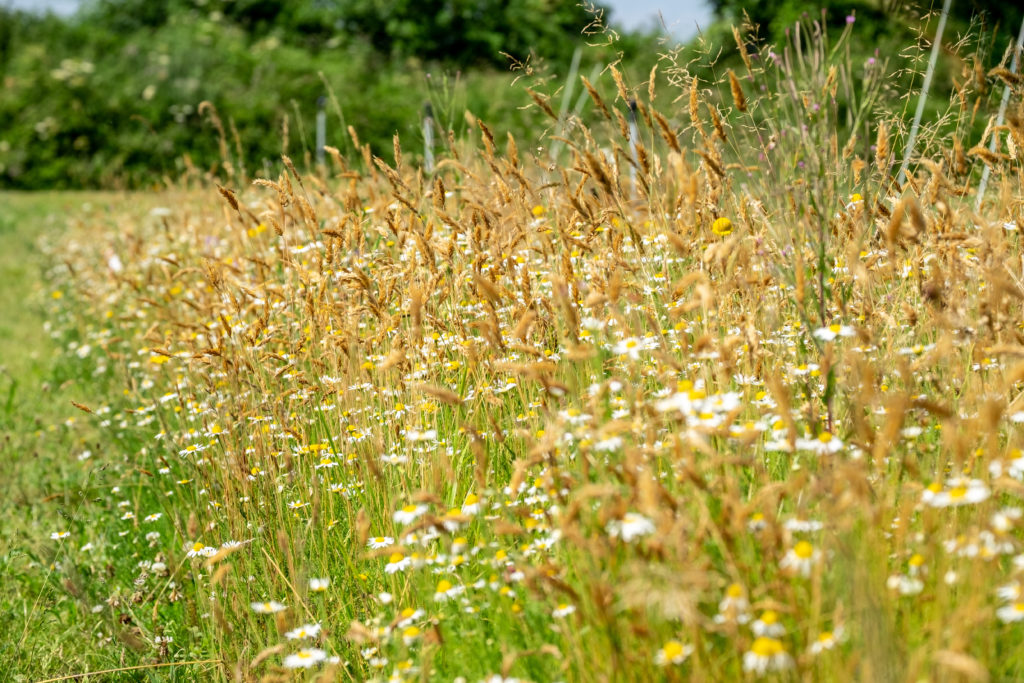
Larger animals will also make use of your wildflower lawn. Where there are bees and beetles, there are also spiders and other insects. These draw mammals into your garden, and you may soon find that your little patch of wildflower is home to a family of hedgehogs, dormice, or foxes.
The impact of your miniature nature reserve goes beyond your own garden. As more people transition to wildflower gardens, we may see a revitalisation of small mammals and birds across the UK. At the moment, many animals have to retreat to untouched areas without human activity. However, the inclusion of wildflower lawns can change that and invite nature back into our villages, towns, and cities.
Health Benefits
Gardening is great for your health and well-being. Despite popular beliefs, you can still get out into a wildflower lawn and prune, trim, and weed as you see fit. This kind of gardening can improve your memory and concentration, as spending time outdoors is wonderful for your mental health and cognitive function.
Wildflower lawns can help you destress, too. Watching nature go about its business is a great way to unwind after a long day and put life into a new perspective. Maintaining a mini-meadow is also good for your physical health, as you’ll still need to get physically active when cutting, digging or reseeding your wildflower lawn.
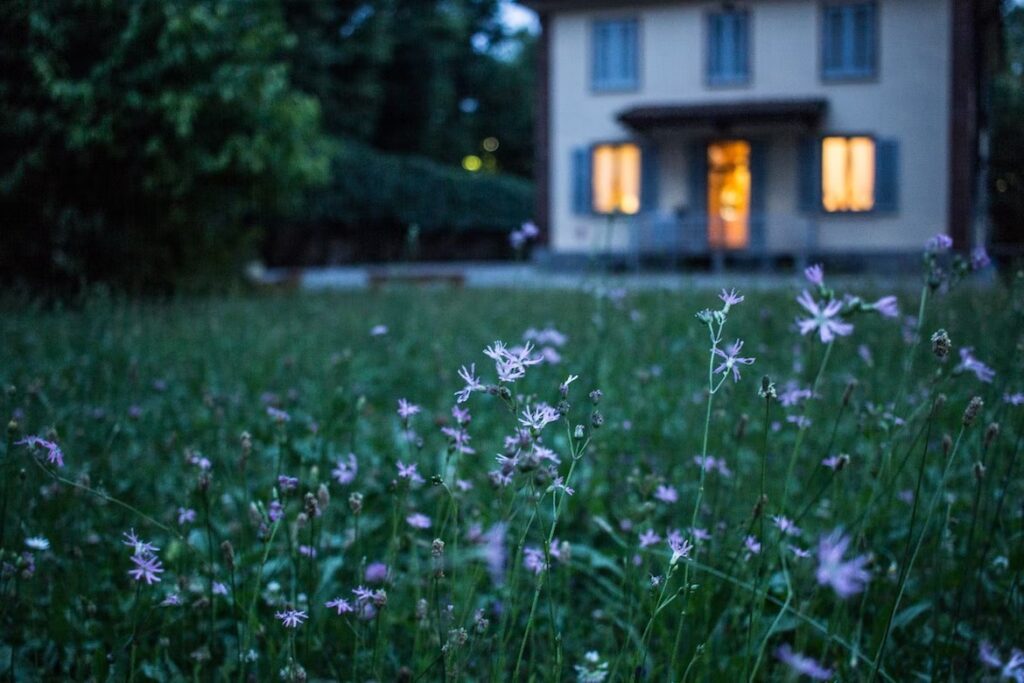
Switching to a Wildflower Lawn
Many people are intrigued by the idea of a wildflower lawn but are nervous to transition from traditional gardens to a wild approach. You can create a stylish meadow in your garden by creating a strong focal point in the middle of your lawn. This can be as simple as a statue or as hands-on as a topiary hedge.
If you’re attached to the look of a standard lawn in certain places — an expanse of solid green turf — you can easily switch to a species-rich turf that brings more biodiversity to your property. This turf replaces monoculture grass with a number of flowering species and meets regulatory standards such as Biodiversity Net Gain.
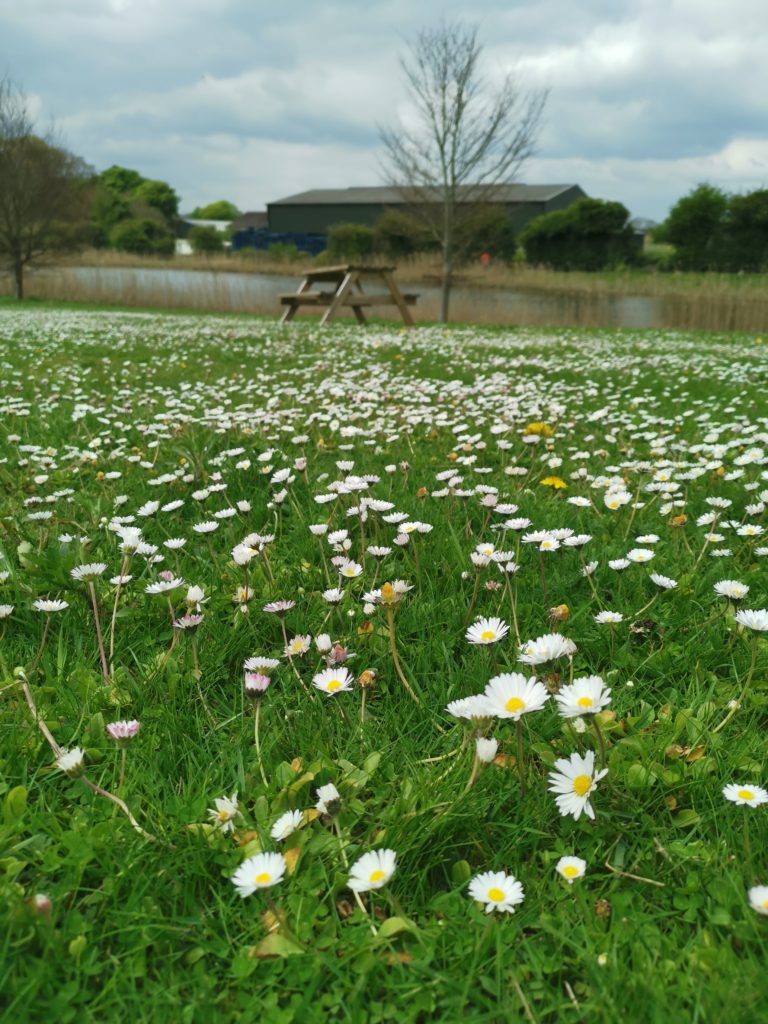
Do your research by planning a staycation in the UK. Try to visit nature parks and campgrounds, as this will help you identify the wildflowers that you want to feature in your garden. Let your lawn grow naturally during your holiday, and see if you can mingle your newly found seeds with the flora and fauna you find when you return.
Conclusion
Wildflower lawns are more that a sustainable showpiece. They’re genuinely good for the environment and can turn your lawn into a safe haven for pollinators, insects, and small mammals. Wildflower meadows are also less energy intensive and can help you save money on energy bills. Start by finding inspiration from larger wildflower meadows in nature parks and reserves. Bring your findings home and build your wild space around a focal point.